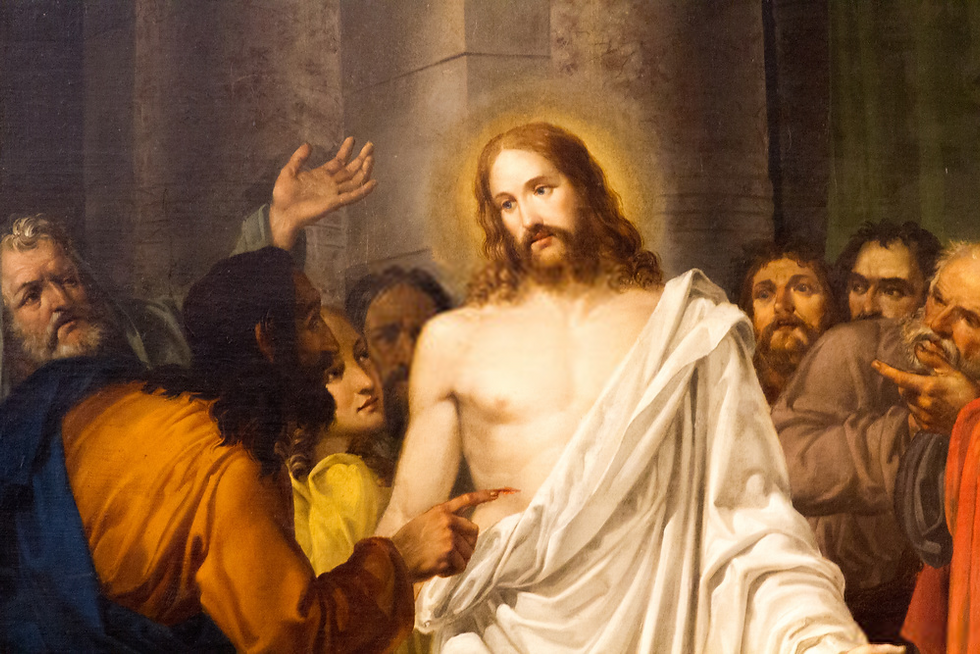Buddhist Mythology: Know Ins and Outs of Buddhism
- Kavisht

- Jan 11, 2023
- 6 min read

Buddhist mythology is a fascinating area of study that explores the stories, symbols, and beliefs of Buddhism. It is a complex mix of history, mythology, and philosophy that offers a unique insight into the Buddhist faith and its teachings. Buddhist mythology often revolves around the life of the Buddha, Siddhartha Gautama, who achieved enlightenment under the Bodhi tree.
This enlightenment is explored through stories of his previous lives, known as Jatakas, and his teachings, known as the Four Noble Truths. Other important figures in Buddhist mythology include deities such as Indra and Mara, and bodhisattvas such as Kuan Yin and Avalokitesvara.
These figures are seen as symbols of compassion, wisdom, and selfless service. Buddhist mythology also includes a wide variety of other stories and symbols, from the noble Eightfold Path to the concept of karma. Studying Buddhist mythology can offer an in-depth look at the religion and its teachings.
Key Figures in Buddhist Mythology
Buddhism is a religion that has been around for centuries and has evolved over time. As such, its mythology is complex and varied, with many different figures playing important roles.
Some of the key figures in Buddhist mythology include the Buddha, the historical founder of Buddhism; Bodhisattvas, enlightened beings who strive to help others; and Devas, powerful spiritual beings. Other important figures include the Arhats, enlightened disciples of the Buddha; Mara, the adversary of the Buddha; and various gods and goddesses. Each of these figures plays an important role in Buddhist mythology, providing wisdom, guidance, and protection to followers of the religion.
Buddhism and Karma
Buddhism is a spiritual tradition founded by Siddhartha Gautama in India over 2,500 years ago. At its core, Buddhism teaches that we should live with love, compassion and wisdom. One of the central teachings of Buddhism is the concept of karma.
According to Buddhist mythology, karma is the law of cause and effect in which our thoughts, words and deeds create a web of interconnectedness and influence our future experiences. In other words, our actions have consequences, and whatever we put out into the world will come back to us in one way or another.
This idea is often represented by the image of a wheel: for every action, there is an equal and opposite reaction. This belief encourages us to be mindful of our actions and understand how our decisions affect ourselves and others. Thus, understanding the concept of karma can help us lead more conscious and compassionate lives.
The Four Noble Truths
The Four Noble Truths are the fundamental teachings of Buddhism and are among the most well-known aspects of Buddhist mythology. The Four Noble Truths were first taught by the Buddha himself and are at the heart of Buddhist philosophy. They are:
The truth of suffering: Life is full of suffering and dissatisfaction.
The truth of the cause of suffering: Suffering is caused by attachment to things we cannot control.
The truth of the end of suffering: We can end suffering by letting go of our attachments.
The truth of the path that leads to the end of suffering: We can end suffering by following an eightfold path that involves wisdom, morality, and meditation.
These Four Noble Truths are not only an important part of Buddhist mythology, but also a valuable guide for living a meaningful life. By understanding and applying these principles, we can learn to live with greater acceptance, peace, and freedom.
Teachings of the Buddha
The teachings of the Buddha are based on Buddhist mythology that dates back centuries. According to this mythology, the universe is composed of the six realms of existence — the gods, demigods, humans, animals, hungry ghosts, and hell-beings. Each of these realms has its own set of rules and laws that must be followed. The goal of Buddhism is to escape this cycle of rebirth and attain enlightenment.
The Buddha taught that this could be achieved by following the Eightfold Path — right view, right intention, right speech, right action, right livelihood, right effort, right mindfulness and right concentration. Through these teachings, the Buddha encourages us to live our lives with compassion and kindness while also seeking knowledge and understanding. By following the teachings of the Buddha, we can become liberated from the suffering that is caused by our false beliefs and desires.
The Path to Enlightenment
The path to enlightenment is a key part of Buddhist mythology, and it is said to be a journey filled with challenges and rewards. According to Buddhist mythology, enlightenment is the ultimate goal of spiritual development—the state of perfect knowledge and understanding. The path to enlightenment is a long one and involves cultivating virtues such as generosity, love, selflessness and wisdom. It also involves letting go of attachments and clinging to things, as well as developing an understanding of the Four Noble Truths.
The path to enlightenment is a personal journey that requires dedication and commitment. It can take years—or even lifetimes—to reach a state of full enlightenment, and the journey will be different for each individual. No matter how long it takes, the journey is said to be worth the effort, as it brings about a sense of inner peace and understanding of the true nature of reality.
Concepts of Nirvana
In Buddhist mythology, Nirvana is the ultimate state of enlightenment and perfect peace. It is the end of suffering, the end of the cycle of life and death, and the ultimate goal of Buddhist spiritual practice. According to Buddhist scriptures, Nirvana is a state of mind that is beyond all duality—it is neither existence nor non-existence, neither being nor non-being. It is a state of pure awareness and bliss.
In some Buddhist texts, Nirvana is described as a place where there is no suffering, no rebirth, and no death. It is an eternal and unchanging state of being. Other texts describe it as a kind of spiritual awakening or liberation from all the pain and suffering of life.
The concept of Nirvana has been seen as an ideal goal for Buddhists since the time of the Buddha himself. It is a state to which we all can aspire, and one which we can reach through mindfulness and spiritual practice. For Buddhists, attaining Nirvana is the ultimate reward for a life lived in harmony with the teachings of the Buddha.
The Wheel of Life
The Wheel of Life, or Bhavacakra in Sanskrit, is an ancient Buddhist symbol that represents the cycle of life and death. The wheel is divided into six realms, which are associated with the six realms of existence in Buddhist mythology.
These realms are: the realm of gods, the realm of demigods, the realm of humans, the realm of animals, the realm of hungry ghosts, and the realm of hell. At the center of the wheel is a circle that represents samsara, or the cycle of birth, death, and rebirth.
The wheel is often depicted with a snake-like creature biting its own tail, representing the endless cycles of life and death. The Wheel of Life serves as a reminder to Buddhists that life is transient and that we must strive to break free from our attachments and desires in order to reach enlightenment.
You May Like: Body of Christ: Why the Church is Called Body of the Christ? What Act of Apostles Say?
The Eightfold Path to Righteousness
The Eightfold Path is one of the core teachings of the Buddhist religion. It is a path to righteousness, morality, and enlightenment. According to Buddhist mythology, the Eightfold Path consists of eight essential components: Right View, Right Thought, Right Speech, Right Action, Right Livelihood, Right Effort, Right Mindfulness, and Right Concentration.
The path is a guide to living a moral and compassionate life. It emphasizes the importance of self-reflection and self-awareness in order to achieve true enlightenment. Following the Eightfold Path is believed to lead to a life of peace and joy, free from suffering and pain.
The teachings of the Eightfold Path can be found in various texts, including the Dhammapada and the Sutta Nipata. As such, it is an essential part of Buddhist mythology and a key component of the religion's spiritual practice.
Tibetan Buddhist Beliefs
Tibetan Buddhist beliefs are largely based on the mythology of the Buddha and his teachings. According to Buddhist mythology, the world is full of gods, demons, and monsters, all of which have the potential to cause harm or good. It is believed that the Buddha was born a prince, and his enlightenment allowed him to transcend these forces and attain nirvana.
In addition to this, Buddhist mythology also tells of various other spiritual beings, such as bodhisattvas and dakinis. These beings are believed to be the guardians of the Dharma, or the path to enlightenment. Tibetan Buddhists also believe in karma, the law of cause and effect. It is believed that through practice and devotion, one can free themselves from suffering and ultimately attain nirvana.
SIGN UP to get such interesting articles directly into your inbox.




























